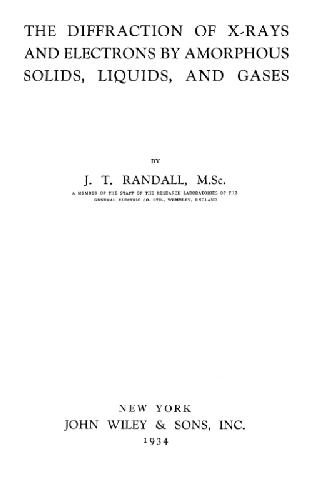J. T. Randall
For the purposes of structural investigations the various forms of matter may conveniently be divided into four classes,namely, crystalline solids, amorphous solids, liquids, and gases. Following on the work of W. L.Bragg in the years 1912 and 1913 knowledge of the arrangements of atoms and molecules in the crystalline state has increased continually at a very rapid rate.The first investigations on the diffraction of X-rays by amorphous solids and liquids were published by Debye and Scherrer in 1916, but it is only comparatively recently that anything like a proper understanding of the results has been obtained. The theories which have been proposed to explain the experimental results are all ultimately. concerned with the degree of structure in the substances, and the working out of the ideas has depended to a large extent on the results of X-ray crystallography. For example, in order to determine the degree of atomic arrangement that may be assigned to a piece of silica glass or a drop of water, the structures of cristobalite and ice must be accurately known.Between the truly crystalline solid and the amorphous solid there exists a vast region of microcrystalline substances of great chemical and biological importance;of these, carbon blacks, cellulose, stretched rubber, and the proteins may be mentioned.In addition there are the substances which may be microcrystalline in one direction only;this description applies to a large number of surface layers, from those due to chemical action with the underlying substance to the two-dimensional crystal in the form of a gas layer. The method of electron一diffraction is ideally suited to the investigation of structure in such cages as these.Finally, the same method, as well as that of X-ray diffraction,may be used to study the structure of single gaseous molecules. | |

Reviews
There are no reviews yet.